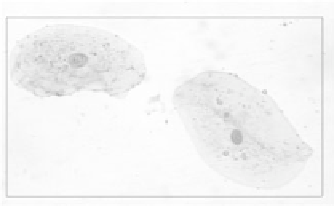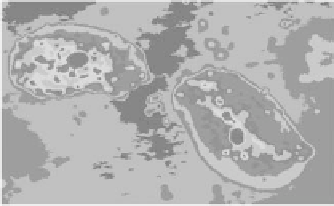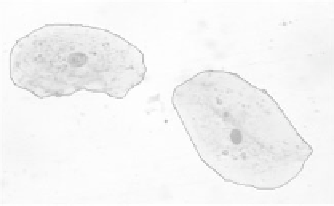Biomedical Engineering Reference
In-Depth Information
2. The constant flow term makes the snake expand or shrink. It can speed
up the convergence and push the snake into concavities easily when the
objects have good contrast, i.e. when the gradient magnitudes at object
boundaries are large. However, when the object boundary is indistinct or
has gaps, the snake tends to leak through the boundary mainly because
of this constant force. The second term in (10.8) is designed to attract
the contour further close to the object boundary and also to pull back
the contour if it leaks through the boundary, but the force may just not
be strong enough since it still depends on the gradient values. It cannot
resolve the existence of a weak edge. Figure 10.7 (right) demonstrates this
shortcoming of the standard geometric snake. The evolving of the snake
is based on the gradient information, and as there is a gradual change of
the intensity, the contour leaks through.
The result of such failures is that the geometric snake will converge to a
nonsensical form. Both these effects are demonstrated in Fig. 10.8 where the
cells contain fuzzy borders and strong but tiny dark “granules” that have led the
standard geometric snake astray (top-right image). The images in the bottom
Figure 10.8:
Multiple objects—top row: initial snake and standard geometric
snakes, bottom row: region segmentation used by RAGS and converged RAGS
snakes (original image courtesy of Dr. Douglas Kline, Department of Biological
Sciences, Kent State University, US) (color slide).




